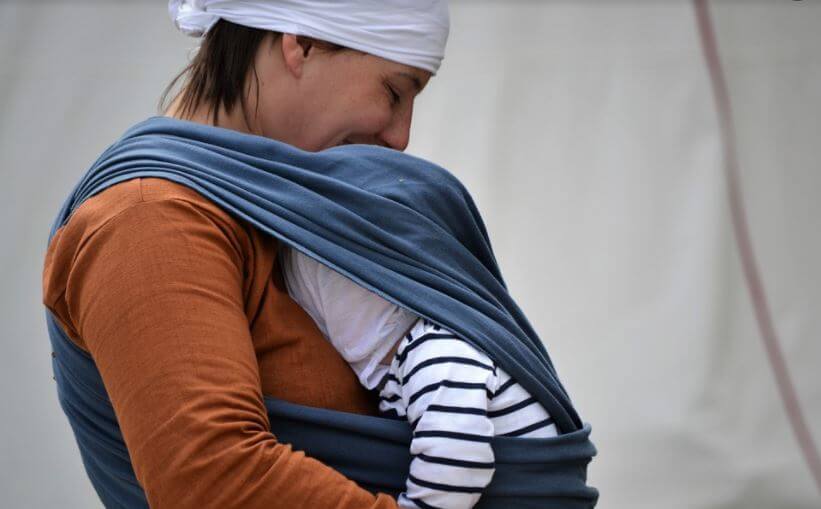- A structured baby carrier is the modern norm of babywearing. Here the wearing is done using a backpack like structure that has adjustable straps and a soft pouch. Baby carriers put the concerns in babywearing to rest. They secure, easy to use, and suitable for new mothers.
- Baby wraps are a babywearing technique where the child is enveloped around the mother using a long stretchy or woven fabric. In other words, a wrap is just a long piece of fabric with tapered ends. Baby wraps offer different carrying positions and can be held on the front, back, and even hip.
- Baby slings are similar to baby wraps. However, in this technique, the cloth is not wrapped around the caregiver but over two sewn rings. Additionally, they differ from wraps since they go over one shoulder compared to wraps, which go over your two shoulders. In baby slings, the child sits on the resulting pouch and buckled in place using the two rings.
All in all, babywearing practices such as slings and wraps are crowded with numerous controversies and mixed reviews. Luckily enough, none of these claims are evident, nor do they have enough reasons to state otherwise. We do think that slings and wraps are a great way to wear children and spare that extra hand.
Factors to consider when selecting a baby carrier
Choosing a baby carrier is not as easy as shopping for a t-shirt, paying for it, and you are good to go. It’s about factoring numerous factors such as:
- Baby security:Your carrier should have adjustable straps that will not squish your baby but keep them buckled in. As if that is not enough, the carrier should allow your child to sit in an M shaped position. As such, this will ensure that they won’t suffer from Hip Dysplasia.
- Ease of use:Using a baby carrier is never as easy as some might think. It’s not like taking a backpack and throwing it on your back, and you are good to go-it can be more challenging than you think. A good carrier should allow you to make adjustments, minus having to put your child down.
- Next, comfort: A good carrier should be comfortable for you and your child. It should have paddings that are comfortable on your back or torso. These paddings should be soft and gentle on your delicate child.
- Other considerations: Does your carrier have pockets? Is it easy to clean? Is it versatile, and can it allow you to carry your child in different positions? Lastly, is the carrier well priced?
Pros of babywearing
- Babywearing creates a skin to skin contact between the baby and the mother. As such, this builds the bond between the caregiver and the child.
- Babywearing is a great way to soothe a child.
- Babywearing allows you to continue with your chores while still nursing your child.
Cons of babywearing
- Babywearing is not easy, especially if you are new to the practice.
